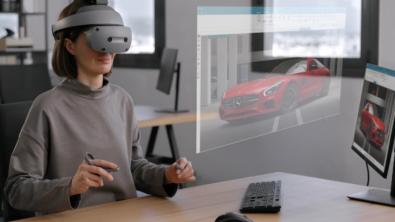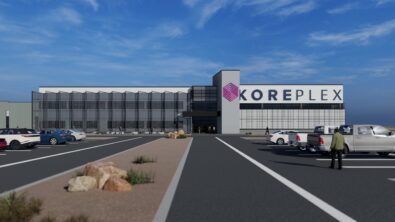A Modular Future for Aircraft Design


Last year on the Industry Forward Podcast we published a really interesting conversation between Dale and a founder and CEO of an innovative aerospace company. Previous to being our VP of Industry Strategy, Dale enjoyed a long career in the aerospace industry. It was during that time that Dale connected with another aerospace engineer named Tristan Crawford who had a bright idea that could revolutionize how defense aircraft are designed and used. Fast forward to today and Tristan has turned that idea into a company called AERALIS.
Tristan was nice enough to join us on the Industry Forward podcast to talk with Dale about some of the major trends in the aerospace industry. Dale and Tristan talk about the origins of AERALIS, why breaking the cost curve is critical in modern aircraft development, the modular defense aircraft concept, and how digitalization can enable modular aircraft development, delivery, and support.
This blog presents a summary of that conversation, but you can listen to both parts of the discussion over on the Industry Forward Podcast page.
Bridging commercial and defense aerospace
The conversation kicked off with a dive into Tristan’s background and how he came upon the idea for AERALIS. Crawford’s journey began in the commercial aerospace sector, where he observed the benefits of fleet commonality and consolidation to improve the cost efficiency for the airlines operating the aircraft. After making the jump from the commercial to the defense sector of the industry, Tristan was struck by the amount of time most defense aircraft spent idle, perhaps due to their specialization towards certain mission requirements.
In commercial aerospace, the emphasis on commonality across aircraft, cockpits, training systems, software systems, and spare parts led to significant cost savings and improved aircraft availability. Tristan saw an opportunity to bring these efficiencies to the defense sector by creating a flexible, modular aircraft system that could meet various mission requirements without the need for entirely new platforms.
Cost, flexibility driving change
Next, Dale and Tristan turned their attention to the significant cost challenges facing the aerospace industry, and particularly the defense sector. The price of new defense aircraft programs is increasing exponentially and has been for some time. Illustrating this trend, Dale cited Augustine’s 16th law, which describes the exponential growth in the unit cost of defense aircraft and predicts that the entire U.S. defense budget in 2054 would be used to purchase just one tactical aircraft.

In response, Tristan observed that the demands placed on aircraft manufacturers are shifting in light of the ballooning cost of these programs. In recent decades, the development of new aircraft programs has become a lengthy and costly process. Defense aircraft programs have attempted to produce extremely advanced, do-all aircraft, resulting in cost overruns and seemingly constant delays. Tristan contrasted these programs with the development of the F-16, which occurred quickly and allowed evolution over time to meet changing mission requirements.
Ultimately, this emphasizes the need for transformational solutions that focus on modularity and incorporate more agile development methodologies to break the cost curve. He also highlighted the importance of an open architecture mindset, allowing for rapid iteration and adaptability in defense systems.
Embracing digital transformation

Dale and Tristan also talked about how digital transformation can support modular aircraft design, including how AERALIS leverages digital tools to enhance its own designs. Tristan explained how AERALIS views the aircraft as part of a digital ecosystem, ensuring seamless integration of maintenance, training, and updates. This end-to-end digital ecosystem is crucial for modernizing certification processes and improving overall efficiency.
Indeed, digital transformation is at the heart of AERALIS’ strategy. Tristan explained that the traditional approach to aircraft design often involved piecemeal adoption of digital tools, leading to inefficiencies and struggles getting aircraft to market. In contrast, by starting with a comprehensive digital ecosystem, companies can ensure that all aspects of the aircraft’s lifecycle are connected. This approach allows for real-time data sharing and integration, from initial design through to maintenance and operational use.
The benefits of this digital ecosystem extend beyond design and manufacturing. Tristan talked briefly about how the integration of maintenance and training applications into the digital ecosystem can improve the performance of the aircraft and increase its availability in the field. This approach also streamlines certification processes, moving away from paper-based documentation to digital systems where authorities can access data directly.
Future Outlook – Evolving requirements drive new approaches
Looking ahead, Dale and Tristan share an optimistic view on the potential for digitalization and AERALIS’ innovative approach to transform defense aviation in an age when cost is more important than ever. Through agile, cost-effective solutions that deliver practical capabilities, aerospace manufacturers may be better positioned to deliver needed equipment at an affordable price. Furthermore, companies that embrace agility and modularity may find themselves at the forefront of a broad shift in the aerospace industry that will change how defense aircraft are used and thus developed.
To listen to the conversation in its entirety, you can check here for Part 1, and here for Part 2. Thanks for reading!
Siemens Digital Industries Software helps organizations of all sizes digitally transform using software, hardware and services from the Siemens Xcelerator business platform. Siemens’ software and the comprehensive digital twin enable companies to optimize their design, engineering and manufacturing processes to turn today’s ideas into the sustainable products of the future. From chips to entire systems, from product to process, across all industries. Siemens Digital Industries Software – Accelerating transformation.


